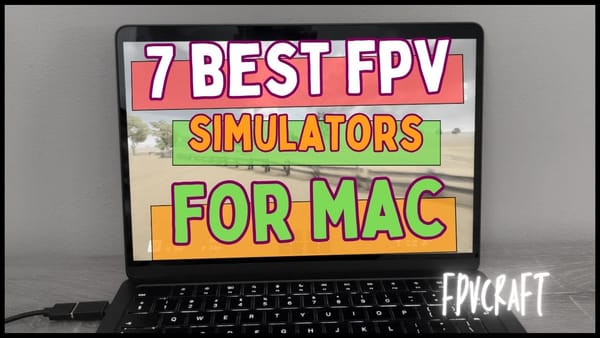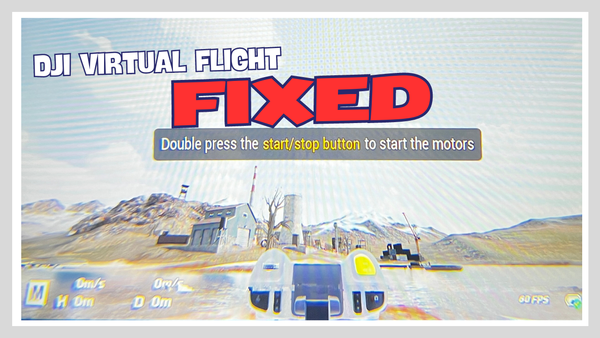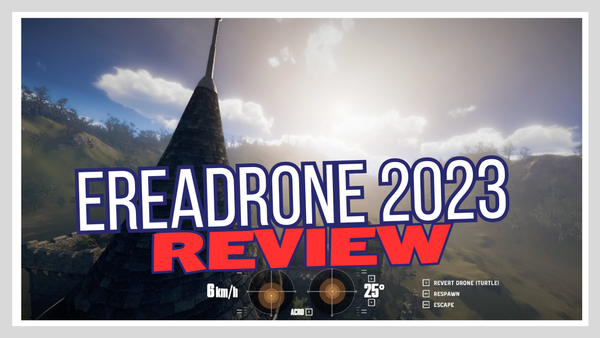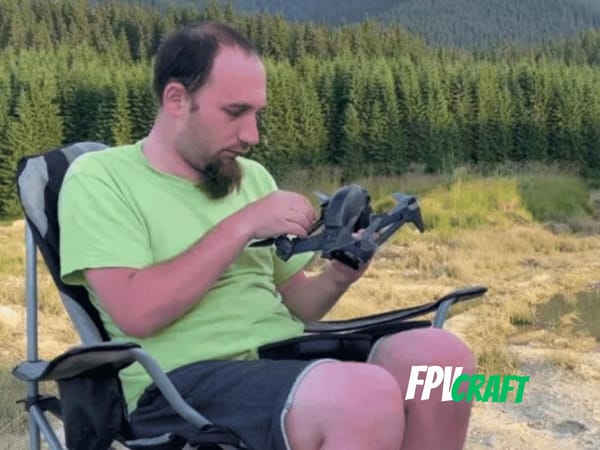Can You Race With DJI FPV Drone?
Because the DJI FPV is actually an FPV drone capable of behaving like a custom quad, we have to ask ourselves: Can it race?

The DJI FPV was released in January 2021, making it already an old drone considering new releases. But the DJI FPV is unique, often used, and still in production.
Now, because the DJI FPV has a manual mode, it should be able to freestyle and race.
But can you race with DJI FPV drone?
You can race with the DJI FPV drone if you change a few settings and set racing RATES. But it will be inferior to other custom FPV racing quads, and if you crash it, the DJI FPV drone won’t survive.
Although you have your quick answer paragraph, I want to get into details about racing with the DJI FPV drone, what settings to change, what are the best racing rates for the DJI FPV drone, and a few tips to make it worth it.
What to know about DJI FPV drone
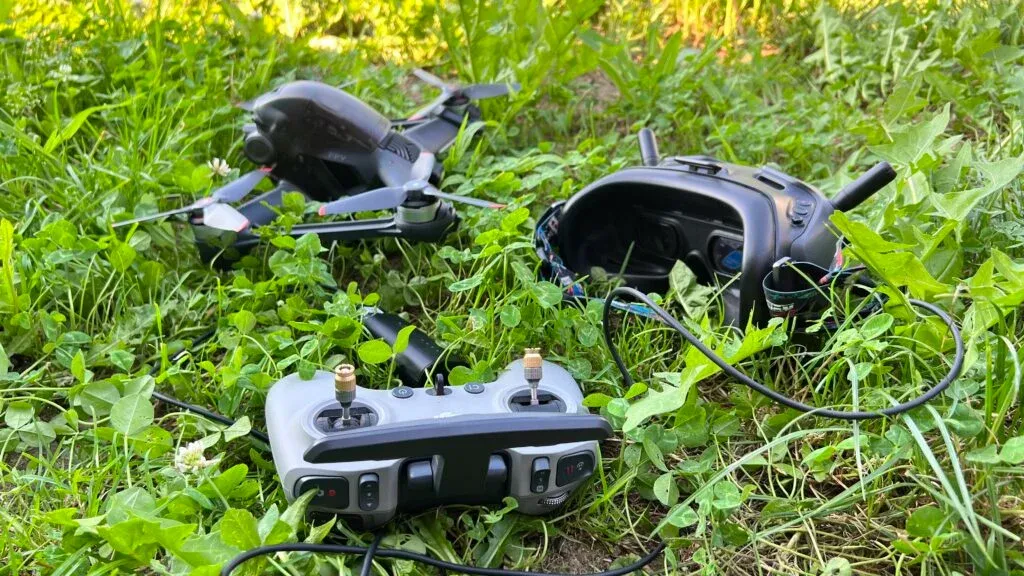
The DJI FPV was the first FPV drone released by DJI a while back, followed by the beautiful cinewhoop Avata.
Like a potato-shaped form, the DJI FPV drone got its nickname “potato.”
With a little under 800 grams, the DJI FPV is a very heavy drone, especially if we consider racing with it.
But the motors are powerful and produce a lot of trust, capable of reaching 87 mph (140 km/h) and accelerating to 60mph in just 2 seconds.
This makes the DJI FPV an excellent drone for long-range flights and even capable of carrying a GoPro.
With a long-lasting battery, you can do much stuff with this drone.
But hey, you’re here to race with the DJI FPV, right?
Before we continue, let’s get over some drone specs.
DJI FPV specs
| SPECS | DJI FPV Drone |
|---|---|
| Size | 178×232×127 mm without propellers |
| Weight | 795 grams |
| Flight Time | Up to 20 minutes (realistically under 15 minutes) |
| Transmission Range | 6.2 miles or 10 km (FCC) 3.7 miles or 6 km (CE, SRRC, MIC) |
| Wind Resistance | Up to 14 m/s according to DJI, but practically can resist higher winds in manual mode. |
| Flight Modes | Normal (N), Sport (S), Manual (M) |
| Camera | 1/2.3 inch CMOS capable of filming in 4k at 60 frames per second, including D-Cinelike |
| Compatible Goggles | DJI FPV Goggles V2 (original ones), DJI Goggles 2, DJI Integra |
| Does it fold? | No |
| Requires registration? | Yes (always check your country drone laws) |
Can DJI FPV drone race?
Yes. As mentioned above, you will have to make a few adjustments to be able to race with this drone. We will cover that later.
But why would you want to race with a DJI FPV drone?
The drone is a bit too heavy and is not crash resistant at all.
Custom FPV racing drones are lightweight, have small and powerful batteries to offer a lot of trust, and are very stable on any aggressive turn.
DJI FPV is not like that. I mean, sure, it is capable and much more potent than DJI Avata.
A custom FPV racing drone usually weighs between 200 and 400 grams without a battery, depending on how lightweight it was made for this.
Here we have a video to share with you from Rotor Riot racing the DJI FPV drone
✅ Pros of racing with DJI FPV drone
There are not many pros I can share about racing with DJI FPV. However, I’ll try my best to add a few:
- It has strong motors.
- It is stable and does not tumble.
- Good transmission image
❌ Cons of racing with DJI FPV drone
- The drone is way too heavy to race properly.
- DJI FPV is not crash resistant at all. One single crash can disperse the drone into a thousand pieces.
- The transmission latency (of min 28ms) is decent for digital VTX, but you should aim towards analog or very low latency cameras for racing.
- Because of the weight, it is more difficult to control the drone in a racing environment.
- Ultimately, this drone can really hurt someone.
Settings to race with DJI FPV drone
Now, as we said, we will try to cover all the settings you must change to make this drone a racing one.
Enable the Manual Mode button.

If you have noticed on your DJI FPV Remote Controller 2, on the back of it, you have a switch with three marks: N, S, and M. This changes the drone from normal to sport and manual mode.
Manual mode is the one you have to use to race with DJI FPV.
But be aware that manual mode does not mean the drone flies in acro mode.
Let’s take it step by step, shall we?
If you switch to manual mode, the drone will remain, by default, in sport mode.
For this, you have to turn on your DJI FPV drone, remote controller, and goggles and change the followings:
- In the Goggles, go to Settings > Control > Remote Controller > Button Customization > Custom Mode
- Select from Sport Mode to Manual Mode
Now, if you switch your DJI FPV to manual mode from the remote controller, your drone will indeed go to manual mode.
This protection was established to avoid going to manual mode accidentally or without prior FPV training.
The next step to make it a full acro drone would be to disable the “M Mode Attitude Limit.“
Disable M Mode Attitude Limit
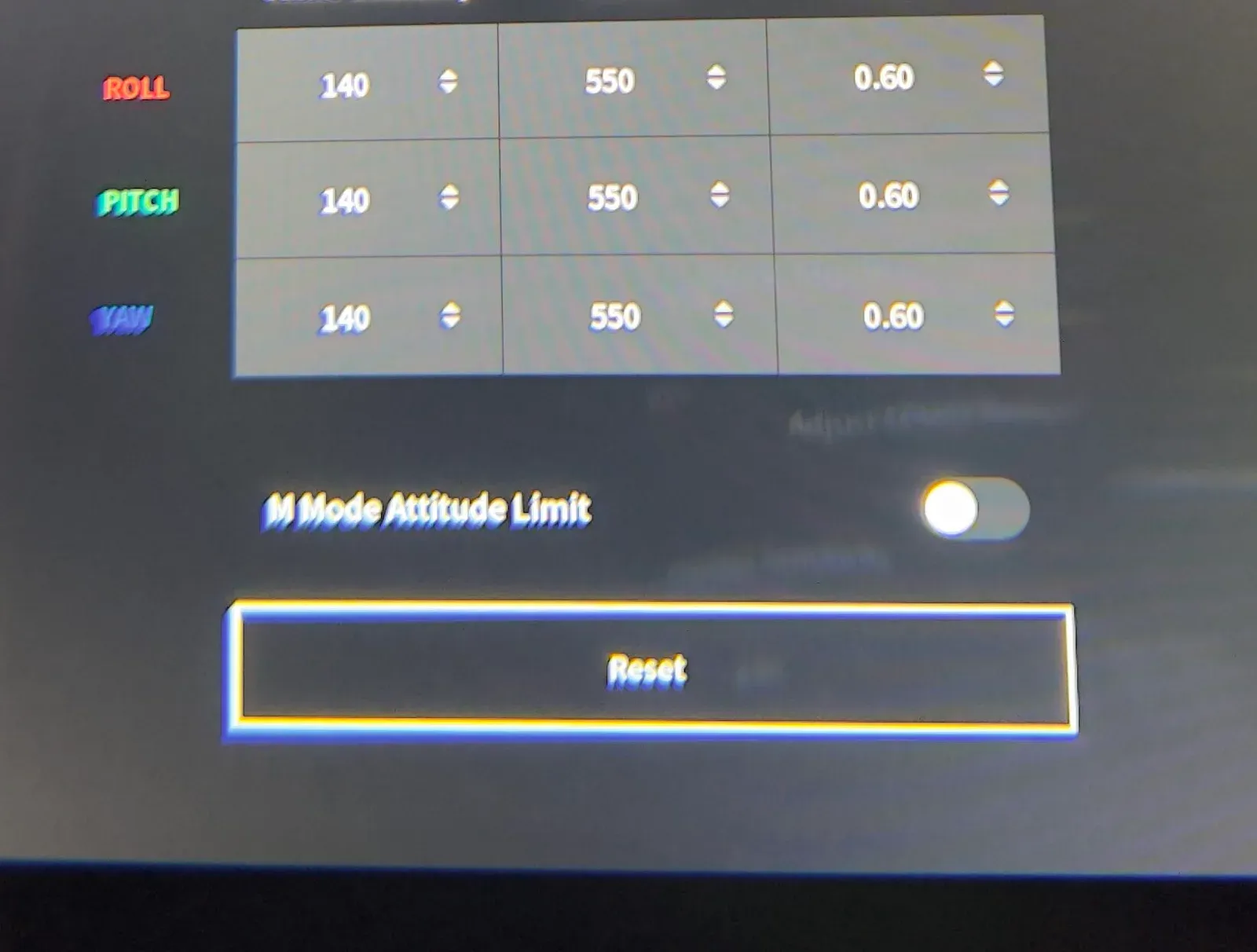
What is this?
The M Mode Attitude Limit levels the DJI FPV drone and keeps it stable when flying in manual mode, not allowing you to flip it over.
This function will block your drone from rolling after a certain inclination.
To disable the M Mode Attitude Limit, follow these steps:
- In the Goggles, go to Settings > Control
- Go to Remote Controller > Gain & Expo
- Disable the “M Mode Attitude Limit”
Right now, after you have disabled the “M Mode Attitude Limit” altogether by enabling the manual mode, the DJI FPV drone will fly like a full-acro FPV drone.
Note: Please don’t confuse the term “Attitude Limit,” which refers to blocking the drone from flipping over when you roll, with “Altitude Limit,” which refers to the maximum altitude set of a drone.
Set DJI FPV racing RATES.
Now, the last step would be to set the rates of DJI FPV (known as Gain & Expo) for some suitable racing.
What are RATES in FPV?
Rates are stick input sensitivity that applies when you fly an FPV drone.
The rates can be linear or non-linear.
- Linear rates refer to a fixed percentage of degrees per second from the maximum set when you travel your RC sticks from the center toward the edge.
- Non-linear rates display a curvature where the RC sticks towards the center are less sensitive to drone reaction for accurate flights and need to travel more to take a turn, whereas where towards the outer side, the drone becomes more sensitive to turns, suitable for racing and freestyle.
This applies only to YAW, ROLL, and PITCH.
The following rates I cannot confirm or deny are good for racing because I personally didn’t try much racing with my DJI FPV drone. I did some freestyle with these rates (down the page) but not lap racing.
I have tried some sharp turns around trees and obstacles to mime racing, but it was slightly off my liking.
However, from all my research, I have found some good rates on the fpvdronepilots forum that are not much different from what I recommend for freestyle, except for the expo, that is drastically dropped down to 0.2 from 0.85
| Values | Center Sensitivity | Max Rate | Expo |
|---|---|---|---|
| Roll | 125 | 900 | 0.2 |
| Pitch | 125 | 900 | 0.2 |
| Yaw | 125 | 900 | 0.2 |
Racing rates for DJI FPV
The rates on DJI FPV drones are called Expo & Gain and are very similar to “ACTUAL” rates a custom FPV drone can use and set in Betaflight.
As for a graphic translation from Betaflight software, something like this should look like the curvature.

» READ MORE: Can DJI FPV Drone Freestyle?
Is DJI FPV at risk of tumbling when racing?
Fortunately, not so much.
The DJI FPV drone has very decent stability when flying and taking sharp corners, and the gravity center is well calculated.
Maybe because it’s a flying potato?
On the other side, the DJI Avata has a massive flaw: it can tumble over when taking more aggressive turns, making it unsuitable for freestyle and racing.
But not DJI FPV. I have never had an issue with the drone falling off the sky uncontrollably or crashing when I tried a bit of freestyle or flew more aggressively.
Can you race with DJI FPV in normal or sport mode?
Well, usually I say NO, you cannot.
Let’s skip the normal mode, which is way too slow even to consider racing.
But in sport mode with DJI FPV, that’s another story. It won’t be a racing drone and cannot be compared with any custom FPV racing drones flying in acro mode.
You can hit a few gates and make a few laps without much sacrifice but with good stability while the drone remains leveled.
Of course, if you try racing with DJI FPV in sport mode vs. any other FPV drone existent, you will always be in last place.
But it is just a fun thought.
What’s better to race with: DJI FPV or DJI Avata?
All the time, I will say DJI FPV is far superior for racing than the DJI Avata.
The DJI Avata has the major advantage of being resistant to crashes.
However, DJI FPV will do better because:
- It is faster and has powerful motors
- It does not tumble over like DJI Avata
- It’s not a cinewhoop
- Has a much better response to aggressive turns
- The “potato” has excellent aerodynamics.
But will not resist any crashes, as mentioned several times.
However, there’s a solution that will increase DJI FPV arms resistance by connecting the front arms with the back arms with a special accessory.
This makes the drone resist minor impacts and crashes; without it, it would likely break an arm or two.
But this wouldn’t guarantee extreme protection like many custom FPV racing drones.
Anyway, I will leave the link (affiliate) to the bracers in case you decide to get interested in improving DJI FPV resistance to crash.

DJI FPV Drone Arm Bracers
- Easy to assemble and disassemble, the DJI FPV Drone Arm Bracers effectively enhance drone arm strength and reduce the risk of drone arm damage.
This is an affiliate link. We earn a commission if you make a purchase, at no additional cost to you.
» READ MORE: Does DJI FPV Drone Have RockSteady and HorizonSteady?
Racing with DJI FPV: Do you have enough experience flying in acro mode?
Now if you are one of the very few who manages to get to the end of an article, I have to ask you: what’s your racing experience?
Do you have any background in FPV racing or good simulator experience?
If not, please don’t try to race with your DJI FPV drone, as you will likely crash the drone.
I recommend at least a few hundred hours of racing in any simulator to improve this skill as much as possible before going crazy with the DJI FPV drone.
» READ MORE: How to Learn FPV in Simulators (Ultimate Guide)

